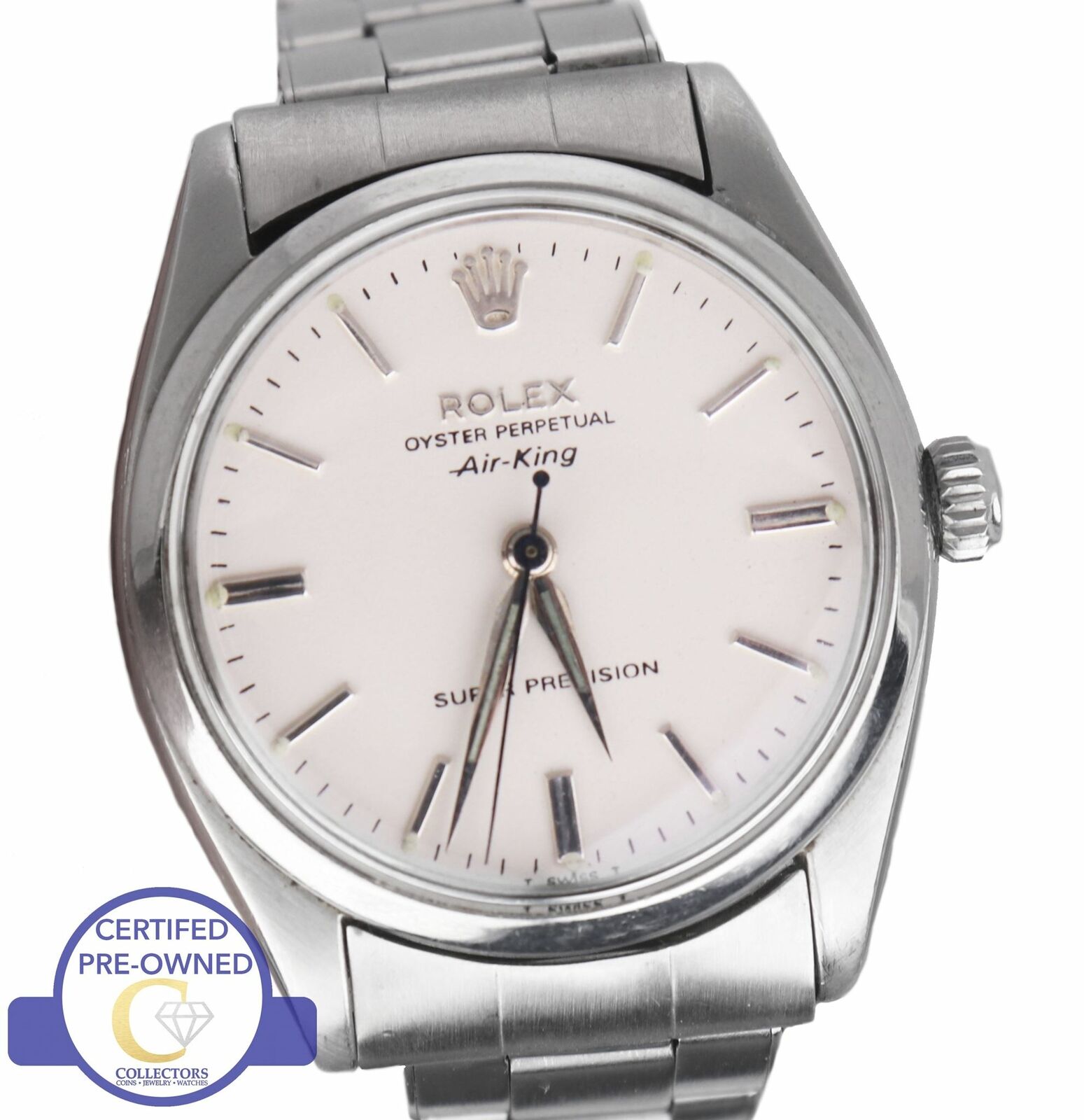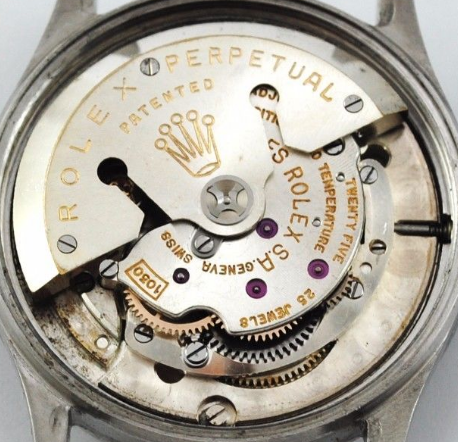Notes: .
Mechanism: The Oyster Perpetual began life with the calibre 1030, in 1950. This calibre was also used in several Submariner and Explorer references, 65xx and 66xx. The Cal.1030 was the most popular 18,000 bph movement at the time it was being made. It was noted for its use of a mono-metallic compensation balance and its blue steel Breguet overcoil hairspring.
Cal.1030 also features an unique rotor which is totally different with today’s, two prongs are hollowed on semi-circle, around the outer race engraved with word of “ROLEX PERPETUAL”, beneath is the word of “PATENTED” and the iconic patter of the Rolex crown.
Cal.1030 also features an unique rotor which is totally different with today’s, two prongs are hollowed on semi-circle, around the outer race engraved with word of “ROLEX PERPETUAL”, beneath is the word of “PATENTED” and the iconic patter of the Rolex crown.
Family Notes: The Rolex Air-King history dates back to 1945. During this time, the Rolex Oyster Perpetual was becoming increasingly popular among combat pilots for its durable case and easy-to-read dial. Hans Wilsdorf appreciated the fact that many brave pilots opted for a Rolex timepiece and chose to honor their loyalty with the addition of the Rolex "Air Series", which also included the iconic Air-King



